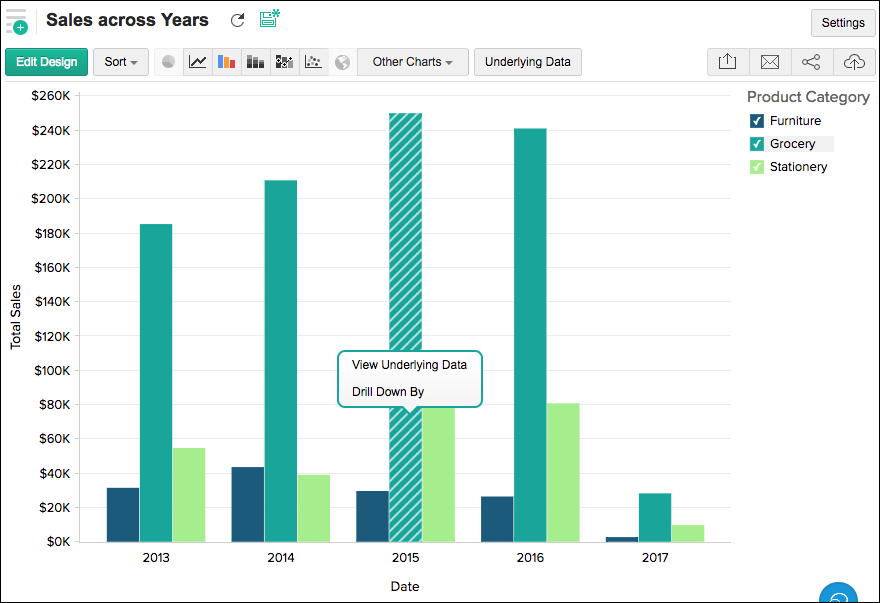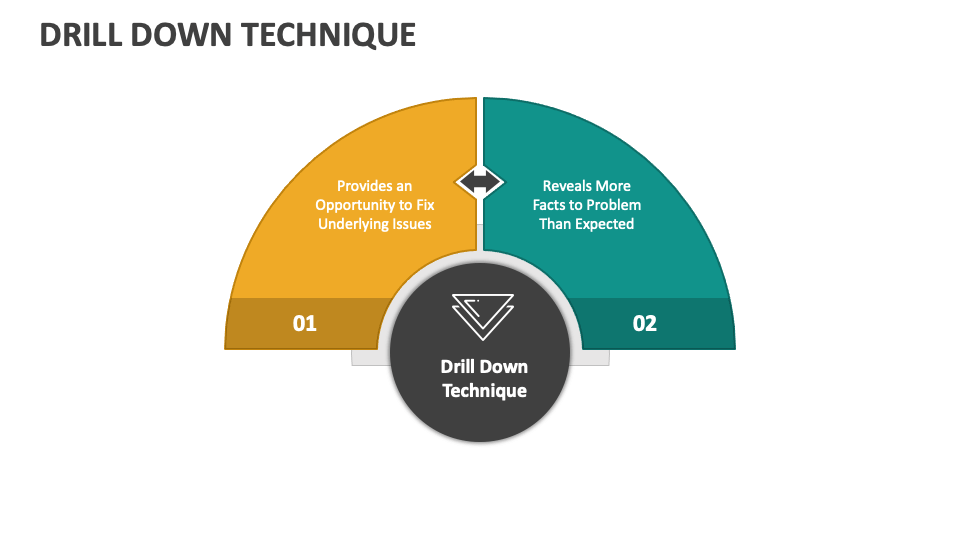P1]
In today’s data-driven world, businesses are drowning in information. The sheer volume of data can be overwhelming, making it difficult to identify key trends, understand performance, and make informed decisions. This is where drill-down reporting comes into play.
Drill-down reporting is a powerful data analysis technique that allows users to explore data at increasingly granular levels. It’s like peeling back the layers of an onion, revealing deeper insights and understanding with each layer removed. Instead of being presented with a static, high-level overview, users can actively investigate the underlying factors that contribute to the overall performance.
This article will delve into the intricacies of drill-down reporting, exploring its benefits, implementation, examples, and best practices, ultimately demonstrating its value as a vital tool for businesses seeking a competitive edge.
Understanding the Concept of Drill-Down Reporting
At its core, drill-down reporting allows users to navigate from a summary view to more detailed information with a simple click or interaction. Imagine a sales dashboard showing total revenue for the year. With drill-down capabilities, a user could click on that figure to see the revenue broken down by quarter. Then, clicking on a specific quarter could reveal sales figures by region, followed by sales by individual product, and finally, sales by specific customer.
This hierarchical navigation allows users to move seamlessly from a macro perspective to a micro-level understanding, uncovering the "why" behind the "what." It eliminates the need for separate reports or complex queries to access granular data.
Key Benefits of Drill-Down Reporting
Drill-down reporting offers a multitude of benefits for businesses across various departments and industries:

Enhanced Data Exploration: It empowers users to explore data in a dynamic and interactive way, uncovering hidden patterns and trends that might be missed in static reports.
Improved Decision-Making: By providing access to detailed information, drill-down reporting enables users to make more informed and data-driven decisions.
Faster Problem Identification: It helps quickly identify areas of concern or underperformance by allowing users to pinpoint the root cause of problems with ease.
Increased Efficiency: It eliminates the need for multiple reports and ad-hoc queries, saving time and resources.

Better Understanding of Performance: It provides a comprehensive view of performance across different dimensions, allowing users to identify areas of strength and weakness.
Improved Communication: It facilitates better communication and collaboration by providing a shared understanding of the data.
Personalized Insights: It allows users to customize their analysis based on their specific needs and interests.

Examples of Drill-Down Reporting in Different Industries
The applications of drill-down reporting are vast and span across numerous industries. Here are a few examples:
Retail: A retail company can use drill-down reporting to analyze sales performance by region, store, product category, and individual product, identifying best-selling items and areas needing improvement.
Finance: A financial institution can use it to analyze loan performance by loan type, customer segment, and geographic location, identifying potential risks and opportunities.
Healthcare: A hospital can use drill-down reporting to analyze patient outcomes by department, physician, and treatment protocol, identifying areas for improvement in patient care.
Manufacturing: A manufacturing company can use it to analyze production efficiency by product line, machine, and shift, identifying bottlenecks and optimizing production processes.
Marketing: A marketing team can use drill-down reporting to analyze campaign performance by channel, target audience, and creative, identifying the most effective strategies and optimizing marketing spend.
Implementing Drill-Down Reporting: Key Considerations
Implementing effective drill-down reporting requires careful planning and execution. Here are some key considerations:
Data Structure: The data needs to be structured in a hierarchical manner, with clear relationships between different levels of detail. This often involves using data warehousing and ETL (Extract, Transform, Load) processes to organize and prepare the data for analysis.
Reporting Tool: Choosing the right reporting tool is crucial. The tool should support drill-down functionality, offer interactive visualizations, and be easy to use for non-technical users. Popular options include Tableau, Power BI, Qlik Sense, and various open-source solutions.
User Interface: The user interface should be intuitive and user-friendly, allowing users to easily navigate between different levels of detail. Clear visual cues and interactive elements are essential.
Performance: The system should be optimized for performance to ensure quick response times, even when dealing with large datasets. This may involve using data aggregation techniques and optimizing database queries.
Security: Data security is paramount. Access to sensitive data should be restricted based on user roles and permissions.
Training: Provide adequate training to users on how to use the drill-down reporting tool and interpret the data.
Best Practices for Effective Drill-Down Reporting
To maximize the benefits of drill-down reporting, consider these best practices:
Define Clear Objectives: Before implementing drill-down reporting, clearly define the objectives and what you want to achieve. This will help guide the design and implementation process.
Understand Your Data: Thoroughly understand your data and its structure. This will help you create meaningful drill-down paths.
Design Intuitive Drill-Down Paths: Design drill-down paths that are logical and easy to follow. Users should be able to easily understand the relationship between different levels of detail.
Use Visualizations Effectively: Use visualizations to present the data in a clear and concise manner. Choose the right type of chart or graph for each level of detail.
Provide Context: Provide context for the data by including labels, descriptions, and annotations. This will help users understand the significance of the data.
Enable Filtering and Sorting: Allow users to filter and sort the data to further refine their analysis.
Regularly Review and Update: Regularly review and update the drill-down reports to ensure they are still relevant and accurate.
The Future of Drill-Down Reporting
As data continues to grow in volume and complexity, drill-down reporting will become even more critical. The future of drill-down reporting will likely involve:
AI-Powered Insights: Integration with artificial intelligence (AI) and machine learning (ML) to automatically identify patterns and anomalies in the data, providing users with proactive insights.
Natural Language Processing (NLP): Use of NLP to allow users to interact with the data using natural language queries, making it even easier to access and analyze information.
Mobile Accessibility: Increased accessibility on mobile devices, allowing users to access and analyze data on the go.
Real-Time Data Integration: Integration with real-time data sources, providing users with up-to-the-minute insights.
Conclusion
Drill-down reporting is a powerful tool that empowers businesses to unlock the full potential of their data. By providing a dynamic and interactive way to explore data at increasingly granular levels, it enables users to make more informed decisions, identify problems faster, and gain a deeper understanding of performance. By following the best practices outlined in this article, businesses can effectively implement drill-down reporting and gain a significant competitive advantage in today’s data-driven world.
FAQ – Drill-Down Reporting
Q: What is the difference between drill-down and drill-through reporting?
A: Drill-down reporting involves navigating within the same report to access more detailed data related to a specific data point. Drill-through reporting, on the other hand, involves jumping to a completely different report that provides more information about the selected data point. Drill-down stays within the context of the initial report, while drill-through branches out to related reports.
Q: What are the prerequisites for implementing drill-down reporting?
A: The prerequisites include: a well-defined data structure, a suitable reporting tool that supports drill-down functionality, a user-friendly interface, optimized performance, and appropriate security measures.
Q: What are some common mistakes to avoid when implementing drill-down reporting?
A: Common mistakes include: poorly structured data, confusing drill-down paths, overwhelming users with too much information, neglecting performance optimization, and failing to provide adequate training.
Q: Can drill-down reporting be used with real-time data?
A: Yes, drill-down reporting can be used with real-time data, allowing users to analyze up-to-the-minute information. However, it requires a robust data infrastructure and reporting tool that can handle real-time data streams.
Q: How do I choose the right reporting tool for drill-down reporting?
A: Consider factors such as: the tool’s support for drill-down functionality, ease of use, data connectivity options, visualization capabilities, performance, security features, and pricing.
Q: How can I ensure that my drill-down reports are user-friendly?
A: Design intuitive drill-down paths, use clear visual cues, provide context for the data, enable filtering and sorting, and provide adequate training. Regularly solicit feedback from users to identify areas for improvement.
Q: Is drill-down reporting only for large enterprises?
A: No, drill-down reporting can be beneficial for businesses of all sizes. Even small businesses can benefit from the insights gained by exploring their data in more detail.
Q: What is the role of data governance in drill-down reporting?
A: Data governance ensures the quality, consistency, and security of the data used in drill-down reporting. It helps to ensure that users are accessing accurate and reliable information.
Q: How does drill-down reporting contribute to data literacy?
A: Drill-down reporting empowers users to interact with data and explore it in more detail, which helps to improve their understanding of data and its implications. This contributes to increased data literacy within the organization.
Q: What are some alternatives to drill-down reporting?
A: Alternatives include: ad-hoc reporting, data mining, and using AI-powered analytics tools to automatically identify patterns and insights. However, drill-down reporting offers a unique combination of interactivity and control that is not always available with these alternatives.



Leave a Reply